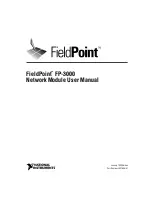
, the access port on a switch connects to the port on a host. The
access port can only connect to an access link. Only the VLAN whose ID is the same as
the default VLAN ID is allowed on the access port. Ethernet frames sent from the access
port are untagged frames.
l
Trunk port
, a trunk port on a switch connects to another switch. It can only
connect to a trunk link. Multiple tagged VLAN frames are allowed on the trunk port.
l
Hybrid port
As shown in
, a hybrid port on a switch can connect either to a host or to another
switch. A hybrid port can connect either to an access link or to a trunk link. The hybrid port
allows multiple VLAN frames and removes tags from some VLAN frames on the outbound
port.
Figure 3-5
Port types
Hybrid Port
Access Link
Trunk Link
l
QinQ port
QinQ ports are enabled with the IEEE 802.1 QinQ protocol. A QinQ port adds a tag to a
single-tagged frame and supports a maximum of 4094 x 4094 VLAN tags, which meets
the requirement for the VLAN quantity.
shows the format of a QinQ frame. The outer tag usually called the public tag
carries the public VLAN ID. The inner tag usually called the private tag carries the private
VLAN ID.
Figure 3-6
Format of a QinQ frame
Destination
address
Source
address
802.1Q
Tag
802.1Q
Tag
Length/
Type
Data
FCS
(CRC-32)
4 bytes 2 bytes
6 bytes
6 bytes
46-1500 bytes4 bytes
4 bytes
Huawei AR530&AR550 Series Industrial Switch Routers
Configuration Guide - Ethernet Switching
3 VLAN Configuration
Issue 01 (2014-11-30)
Huawei Proprietary and Confidential
Copyright © Huawei Technologies Co., Ltd.
75
















































